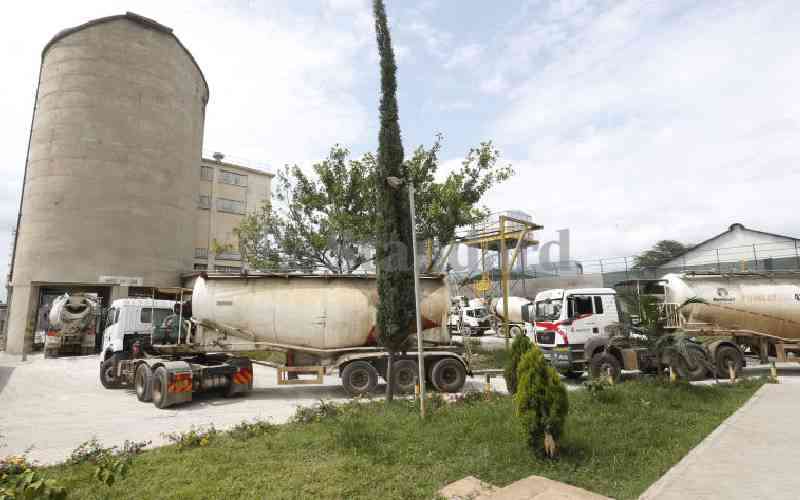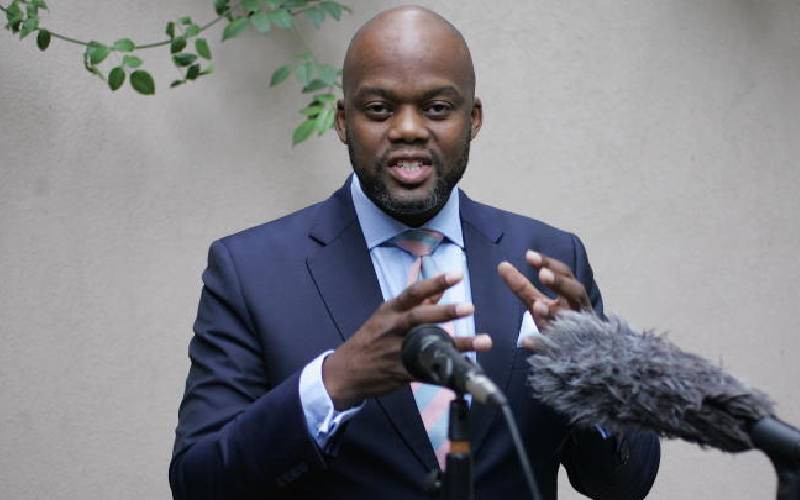
Hundreds of scientists who attended the 8th World One Health Congress (WOHC) in Cape Town, South Africa, are unanimous that the next pandemic is nigh.
Whilst normalcy has resumed, the horrors of Covid-19 can never be understated. At its peak the outbreak snatched tens of thousands of lives every day. Hospitals were operating beyond capacity.
Patients lay struggling through every breath – chests coming and going heavily – like it was their last. And who can forget the lonely days foisted upon families by lockdowns?
“One of the issues at the meeting was, can we predict what the next pandemic is going to be like? The answer is no, we cannot,” Prof. Ab Osterhaus, a virologist and a co-chair of WOHC said.
Pandemics are not new. Humanity suffered through the bubonic plague, the Spanish flu, polio and cholera epidemics, bird flu, small pox and so on.
We had Severe Acute Respiratory Syndrome (SARS) outbreak in 2003. And the horrors of Ebola in Democratic Republic of Congo and parts of the Great Lakes Region that outbreak in West Africa of 2013-1026, were well documented too.
“There are new viruses that are coming up,” Dr Willy Tonui, a Kenyan scientist told The Standard on the sidelines of WOHC.
Tonui, a consultant in biosecurity and biosafety, says now more than ever, citizens have to pay attention to the scientific work being put to tackle infectious diseases.
And indeed, Mother Earth is already sending warnings on the next pandemic.
In 2022, WHO declared monkey pox (mpox) a Public Health Emergency of International Concern. In July, Kenya recorded its first mpox case in a truck driver who plies the Congo route.
And just last week, Health Cabinet Secretary Dr Deborah Barasa, issued a press statement warning Kenyans about Marburg Virus Disease (MVD).
This follows Rwanda, another East African neighbour, confirming MVD within its population last month. As at October 3, 36 cases and at least 12 deaths had already been documented.
“It is much easier today for an infectious disease to spread. Our world now has interconnectivity; we fly all over the world; we’re shipping materials and animals all over the world. There are a lot of factors that show the chance for occurence and spread of a pathogen is getting bigger,” says Osterhaus.
What are we – laymen – to do to stifle the next pandemic?
“It’s not like you can build a bunker,” says Osterhaus. “So, what you can do is indeed, make sure that in your country, collectively, you vote for the right person… someone who will take this issue seriously and would offer leadership in preparing citizens to survive a pandemic,” he adds.
Organised by the global One Health Community (gOHC), WOHC brought together hundreds of scientists with the aim of sharing research and seeking solutions for the wellbeing of humanity.
At the heart of the congress discussions was the need to respond to pandemics – and disease outbreaks – from the one health lens. The One Health framework recognises the interconnectedness of human health, animal health, environmental health, plant health, and food safety and security.
Prof. Osterhaus, who is also a veterinarian, and a guest professor at the University of Veterinary Medicine in Hannover, noted that to successfully fight pandemics, the world should work together in more ways than one.
He says, “It’s not the virologist who identifies a new virus that’s going to solve the problem. The virologist will collaborate in making a vaccine; but you can’t do it alone.
“We will need international organisation. It will be the virologists, the veterinarians, the medical doctors, the environmentalists – because these disease link all of them.
“We can no longer think in silos. What we are doing is bringing together people from different professions, not just the scientists, but the policy makers, government technocrats, and other key stakeholders. Fighting future pandemics will need everyone doing their part.”
At WOHC, scientists presented papers on antimicrobial resistance (AMR), climate change and adaptation, biosecurity and biosafety, food and feed security, zoonotic diseases, and vector borne diseases. These are sectors from which the next pandemic would likely emerge.
Dr. Maria Van Kerkhove, the Emerging Diseases and Zoonoses Unit Head, and the technical lead for the COVID-19 response at WHO, presided over a session at WOHC on the importance of One Health collaborations in epidemic and pandemic preparedness.
“WHO has identified 18 pathogens that have the potential to cause epidemics and pandemics. These include M-pox. We need governments to be on alert across different sectors; looking at different legal aspects, looking at financial aspects.
“We want to prevent spillovers of diseases from animals to humans. We can only achieve these if we are based on a foundation of science, trust, transparency and collaboration,” she said.
What type of pathogen might be at the centre of the next pandemic? “Most likely it will be a virus – if history is anything to go by,” says Prof Osterhaus, an opinion he shares with Dr Tonui.
Marietjie Venter, an expert in zoonotic arbo and respiratory viruses, and Congress Chair at University of Witwatersrand in South Africa, insisted on the importance of one health approach to pandemic preparedness.
She said, “Global scientific leaders and policy makers in human, animal, environmental and plant health, will be putting the One Health approach in action in preparing for future epidemics and pandemics.”
WOHC had over 350 speakers and 1426 participants from 87 countries. At least 1388 abstracts were presented.
The congress featured high-level representatives from the Quadripartite that is currently spearheading the one health approach to wellness, including Food and Agriculture Organization (FAO), UN Environment Programme (UNEP), World Health Organization (WHO) and World Organization for Animal Health (WOAH.
This story was produced with the support of the Internews’ Earth Journalism Network.
 The Standard Group Plc is a multi-media organization with investments in media
platforms spanning newspaper print operations, television, radio broadcasting,
digital and online services. The Standard Group is recognized as a leading
multi-media house in Kenya with a key influence in matters of national and
international interest.
The Standard Group Plc is a multi-media organization with investments in media
platforms spanning newspaper print operations, television, radio broadcasting,
digital and online services. The Standard Group is recognized as a leading
multi-media house in Kenya with a key influence in matters of national and
international interest.
 The Standard Group Plc is a multi-media organization with investments in media
platforms spanning newspaper print operations, television, radio broadcasting,
digital and online services. The Standard Group is recognized as a leading
multi-media house in Kenya with a key influence in matters of national and
international interest.
The Standard Group Plc is a multi-media organization with investments in media
platforms spanning newspaper print operations, television, radio broadcasting,
digital and online services. The Standard Group is recognized as a leading
multi-media house in Kenya with a key influence in matters of national and
international interest.











